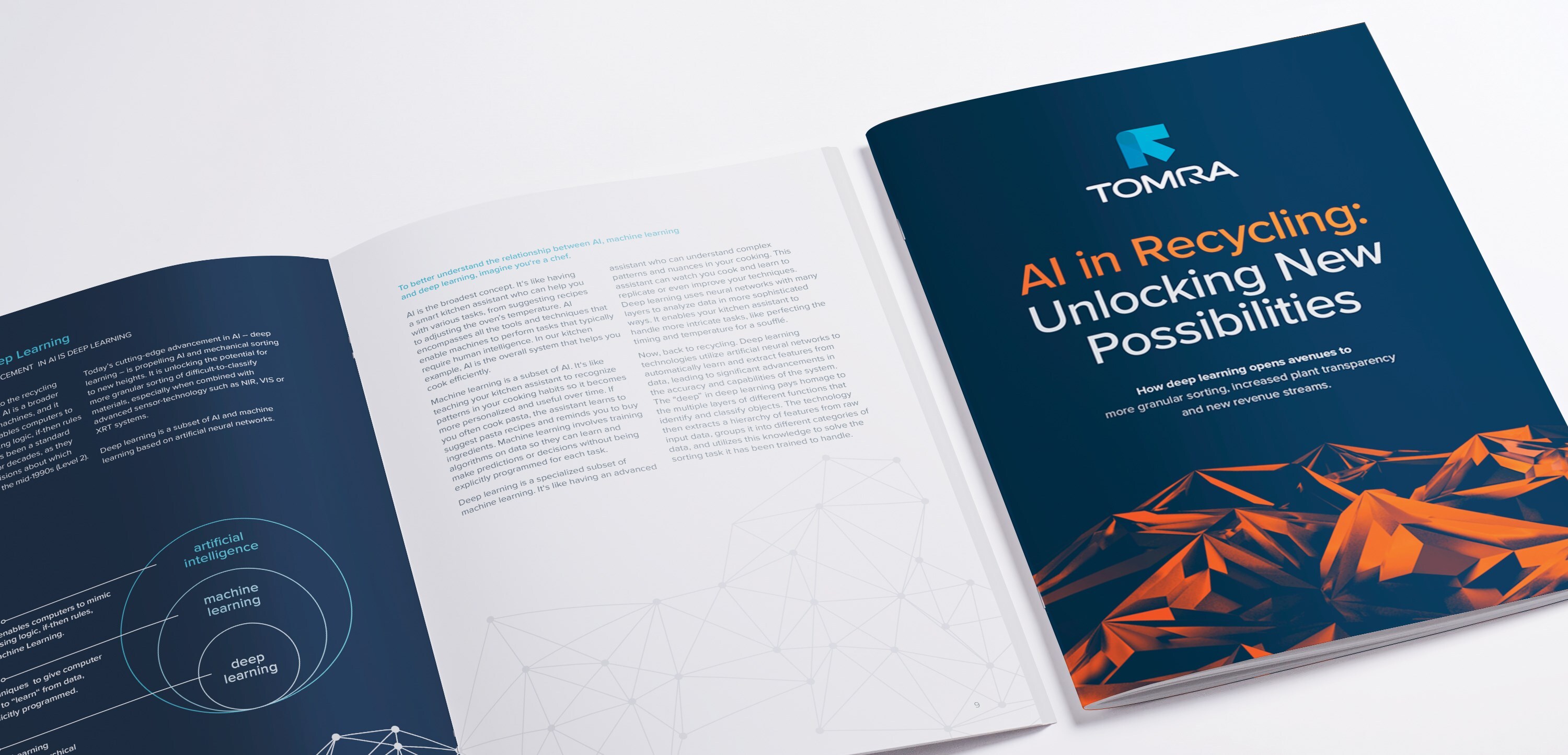

Leading global sorting solutions provider, TOMRA Recycling, has published its latest eBook, ‘AI in Recycling: Unlocking New Possibilities’. This comprehensive guide explores the rapidly evolving role of Artificial Intelligence (AI), particularly deep learning (DL), in revolutionizing the global recycling industry and driving material circularity.

The free-to-download eBook aims to demystify deep learning, explaining its mechanisms and showcasing its practical applications in overcoming complex sorting challenges, such as enabling the separation of previously hard-to-classify materials through the training of vast datasets. From manual processes to the prospect of fully autonomous AI-driven systems, the evolution of sorting technologies is also examined in detail, alongside the core concepts of AI and deep learning.
More granular sorting, increased plant transparency and new revenue streams
The eBook details how the powerful synergy achieved by combining deep learning with traditional sensors in optical sorters is unlocking new opportunities for the recovery of valuable resources, enhancing material purity and creating new revenue streams. This is exemplified by TOMRA's award-winning GAINnext™ solution for food-grade plastics recovery (for PET, PP and HDPE), PET and paper cleaning and high-purity recovery of aluminum Used Beverage Cans (UBC), as well as the capabilities of the PolyPerception AI-based waste analyser in providing real-time, end-to-end object tracking and classification of waste streams.
Readers will gain insights into the tangible benefits of DL-based solutions, including enhanced flexibility, the creation of new high-value material streams, superior sorting accuracy, advanced plant automation and optimized processes. The guide also showcases the growing range of deep learning applications pioneered by TOMRA including real-world examples. Furthermore, it examines the crucial role of AI in meeting the demands of evolving regulations like the Packaging and Packaging Waste Regulation (PPWR), which necessitate advanced sorting capabilities to achieve circular economy targets. Looking ahead, the eBook presents a vision for the future where AI could drive fully transparent and self-optimized recycling plants.
A guide that encourages recyclers and processors to embrace the transformative potential of AI
Fabrizio Radice, SVP & Head of Sales and Marketing at TOMRA Recycling, comments, “We believe our new eBook will serve as a valuable resource for the global recycling community, providing a clear understanding of how deep learning is not a futuristic concept, but rather a tangible solution that is already delivering significant benefits and paving the way for a truly circular economy. By demystifying the technology and showcasing real-world applications, our aim is to encourage recyclers and processors to embrace the transformative potential of AI and explore how it can help them achieve their operational goals, meet rising demand for recycled content and take advantage of new, expanded market opportunities.”
Note: This article has been issued by TOMRA and has been published by AL Circle with its original information without any modifications or edits to the core subject/data.
Responses








